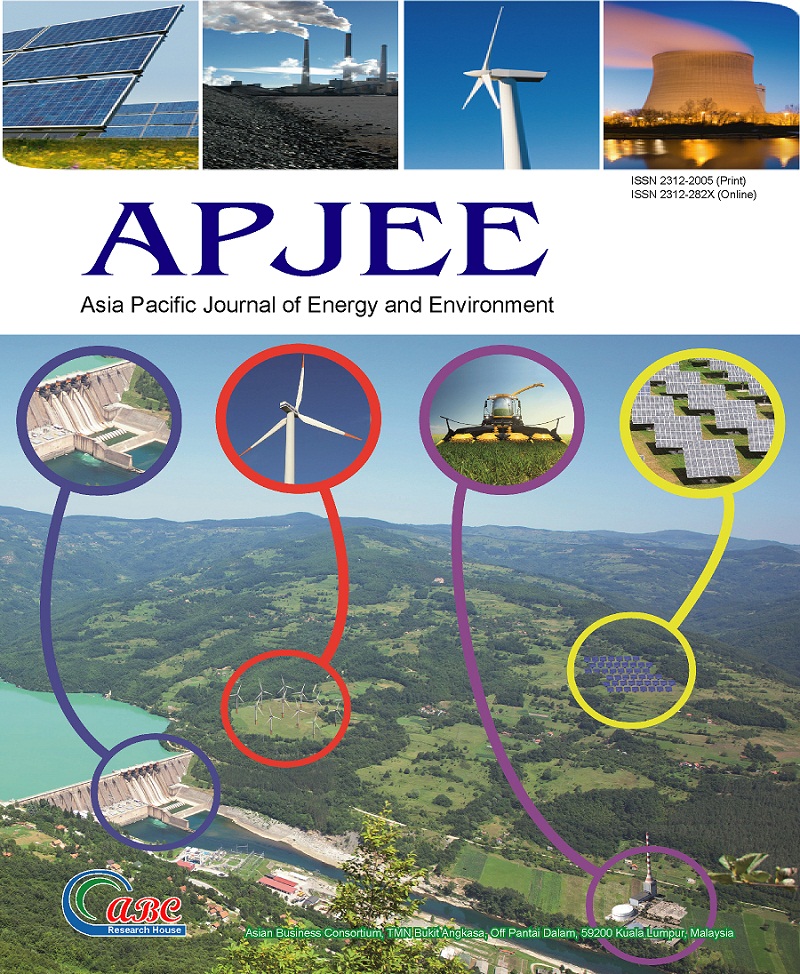Green Chemistry Approaches to Vulcanization: Reducing Environmental Impact in Rubber Manufacturing
DOI:
https://doi.org/10.18034/apjee.v8i2.750Keywords:
Green Chemistry, Vulcanization, Environmental Impact, Rubber Manufacturing, Sustainable Processes, Eco-friendly Vulcanization, Green Rubber ProductionAbstract
To lessen its environmental influence, this study explores using green chemical techniques in rubber manufacturing vulcanization procedures. The primary goals are investigating bio-based additives, innovative catalysts, ionic liquids, renewable energy sources, circular economy strategies, and life cycle assessment techniques. From a methodological standpoint, the study uses an extensive literature review to investigate the present status of industry practices and research in green chemistry for vulcanization. Important discoveries demonstrate how innovative catalysts, ionic liquids, and bio-based additives can reduce environmental damage while boosting process effectiveness. Furthermore, combining the concepts of the circular economy with renewable energy sources is a potential approach to sustainability. The policy implications highlight the necessity of creating regulatory frameworks, encouraging cooperation, and providing incentives for research and development to facilitate the shift to more environmentally friendly vulcanization procedures. This study emphasizes how critical it is to adopt green chemistry ideas to accomplish environmental responsibility and long-term sustainability in the rubber industry.
Downloads
References
Azarabadi, H., Eranki, P., Landis, A. (2017). Life Cycle Impacts of Commercial Guayule Rubber Production Estimated from Batch-scale Operation Data. The International Journal of Environmental Sustainability, 13(3), 15-30. https://doi.org/10.18848/2325-1077/CGP/v13i03/15-30
Cabrera, F. C., Dognani, G., Faita, F. L., dos Santos, R. J., Agostini, D. L. S. (2016). Vulcanization, Centrifugation, Water-washing, and Polymeric Covering Processes to Optimize Natural Rubber Membranes Applied to Microfluidic Devices. Journal of Materials Science, 51(6), 3003-3012. https://doi.org/10.1007/s10853-015-9611-y
Dechnarong, N., Nimpaiboon, A., Kumarn, S., Phinyocheep, P., Sakdapipanich, J. (2018). Compatibility Enhancement of Silica and Natural Rubber Compound Using UVA-induced Silane-grafted Saponified Skim Natural Rubber. Journal of Polymer Research, 25(1), 1-12. https://doi.org/10.1007/s10965-017-1420-3
Habib, N. A., Chieng, B. W., Mazlan, N., Rashid, U., Yunus, R. (2017). Elastomeric Nanocomposite Based on Exfoliated Graphene Oxide and Its Characteristics without Vulcanization. Journal of Nanomaterials, 2017. https://doi.org/10.1155/2017/8543137
Khair, M. A., Tejani, J. G., Sandu, A. K., & Shajahan, M. A. (2020). Trade Policies and Entrepreneurial Initiatives: A Nexus for India’s Global Market Integration. American Journal of Trade and Policy, 7(3), 107–114. https://doi.org/10.18034/ajtp.v7i3.706
Nawwar, G., Yakout, S., El-Sadiek, M.S.A., El-Sabbagh, S. (2011). Synthesis and Evaluation of new Antioxidants for Styrene Butadiene Rubber. Pigment & Resin Technology, 40(6), 399-409. https://doi.org/10.1108/03699421111180554
Pydipalli, R. (2018). Network-Based Approaches in Bioinformatics and Cheminformatics: Leveraging IT for Insights. ABC Journal of Advanced Research, 7(2), 139-150. https://doi.org/10.18034/abcjar.v7i2.743
Pydipalli, R., & Tejani, J. G. (2019). A Comparative Study of Rubber Polymerization Methods: Vulcanization vs. Thermoplastic Processing. Technology & Management Review, 4, 36-48. https://upright.pub/index.php/tmr/article/view/132
Richardson, N., Pydipalli, R., Maddula, S. S., Anumandla, S. K. R., & Vamsi Krishna Yarlagadda. (2019). Role-Based Access Control in SAS Programming: Enhancing Security and Authorization. International Journal of Reciprocal Symmetry and Theoretical Physics, 6, 31-42. https://upright.pub/index.php/ijrstp/article/view/133
Rodriguez, M., Tejani, J. G., Pydipalli, R., & Patel, B. (2018). Bioinformatics Algorithms for Molecular Docking: IT and Chemistry Synergy. Asia Pacific Journal of Energy and Environment, 5(2), 113-122. https://doi.org/10.18034/apjee.v5i2.742
Shimada, K. (2017). Enhancement of MCF Rubber Utilizing Electric and Magnetic Fields, and Clarification of Electrolytic Polymerization. Sensors, 17(4), 767. https://doi.org/10.3390/s17040767
Suriani, A. B., Nurhafizah, M. D., Mohamed, A., Masrom, A. K., Mamat, M. H. (2017). Electrical Enhancement of Radiation-vulcanized Natural Rubber Latex Added with Reduced Graphene Oxide Additives for Supercapacitor Electrodes. Journal of Materials Science, 52(11), 6611-6622. https://doi.org/10.1007/s10853-017-0897-9
Tejani, J. G. (2017). Thermoplastic Elastomers: Emerging Trends and Applications in Rubber Manufacturing. Global Disclosure of Economics and Business, 6(2), 133-144. https://doi.org/10.18034/gdeb.v6i2.737
Tejani, J. G. (2019). Innovative Approaches to Recycling Rubber Waste in the United States. ABC Research Alert, 7(3), 181–192. https://doi.org/10.18034/ra.v7i3.660
Tejani, J. G. (2020). Advancements in Sustainable Rubber Production: Bio-Based Alternatives and Recycling Technologies. ABC Journal of Advanced Research, 9(2), 141-152. https://doi.org/10.18034/abcjar.v9i2.749
Tejani, J. G., Khair, M. A., & Koehler, S. (2021). Emerging Trends in Rubber Additives for Enhanced Performance and Sustainability. Digitalization & Sustainability Review, 1(1), 57-70. https://upright.pub/index.php/dsr/article/view/130
Tejani, J., Shah, R., Vaghela, H., Kukadiya, T., Pathan, A. A. (2018). Conditional Optimization of Displacement Synthesis for Pioneered ZnS Nanostructures. Journal of Nanotechnology & Advanced Materials, 6(1), 1-7. https://www.naturalspublishing.com/Article.asp?ArtcID=13193
Yarlagadda, V. K., & Pydipalli, R. (2018). Secure Programming with SAS: Mitigating Risks and Protecting Data Integrity. Engineering International, 6(2), 211–222. https://doi.org/10.18034/ei.v6i2.709
Zedler, L., Klein, M., Saeb, M. R., Colom, X., Cañavate, J. (2018). Synergistic Effects of Bitumen Plasticization and Microwave Treatment on Short-Term Devulcanization of Ground Tire Rubber. Polymers, 10(11), 1265. https://doi.org/10.3390/polym10111265
Downloads
Published
Issue
Section
License
Copyright (c) 2021 Charlotte Roberts, Rajani Pydipalli, Jayadip GhanshyamBhai Tejani, Md. Nizamuddin

This work is licensed under a Creative Commons Attribution-NonCommercial 4.0 International License.









